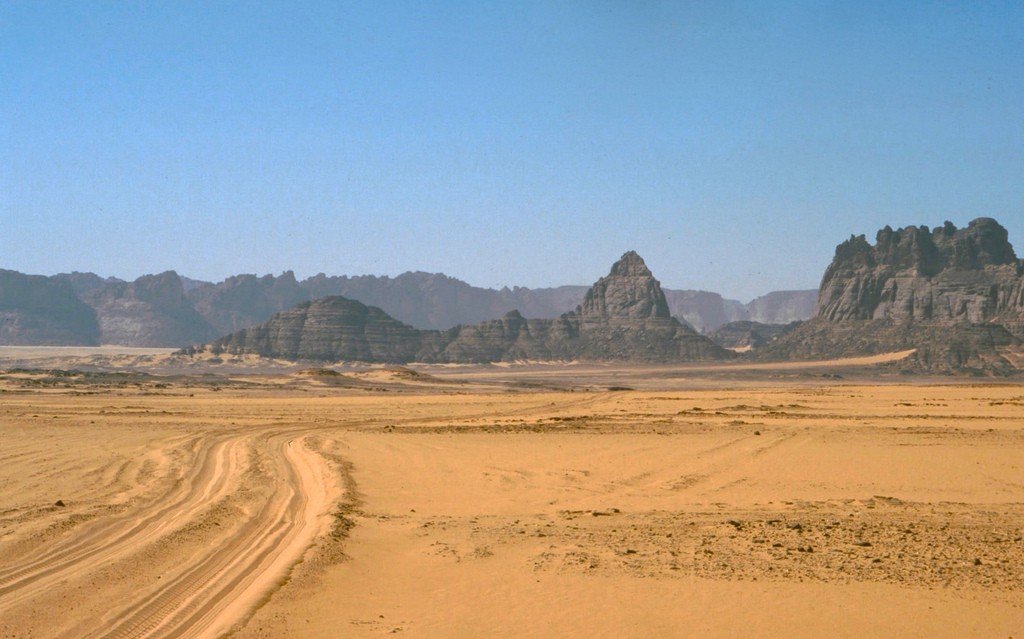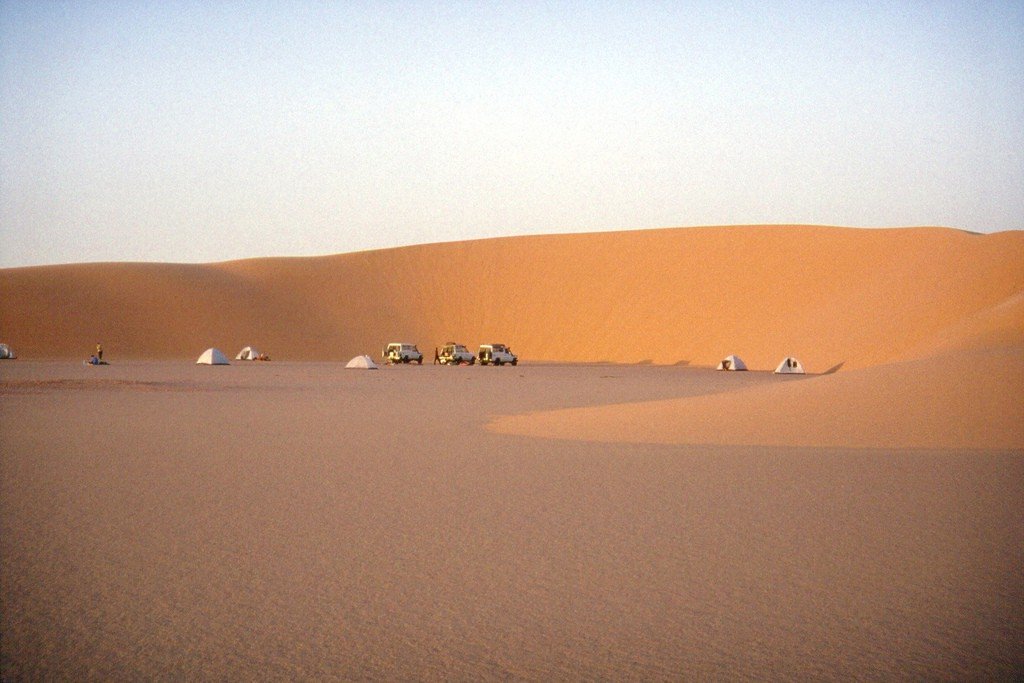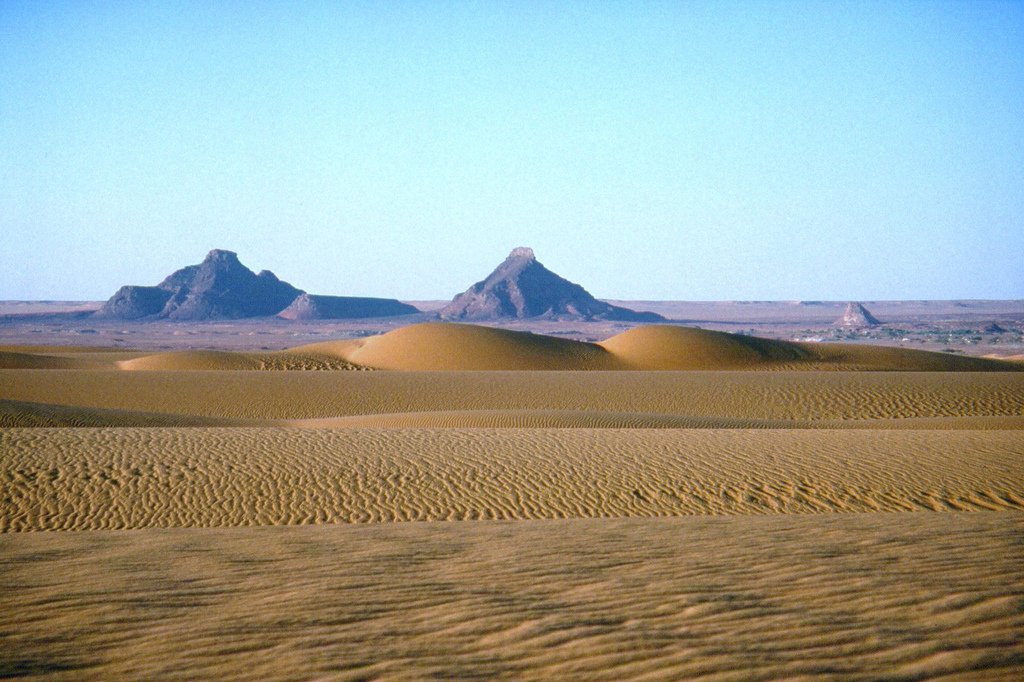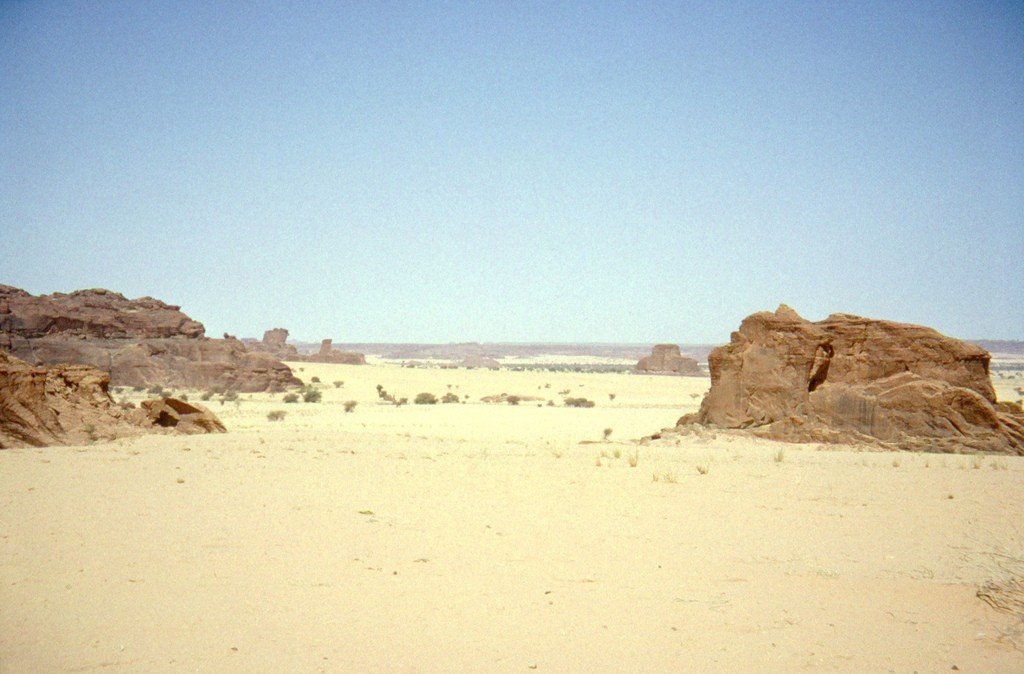Tibesti Highlands
This sightseeing attraction is related to the countries:ChadLibyaTibesti Highlands is a mountain plateau in the central Sahara, located mainly in the north of the state of Chad and partly in the south of Libya. It is an elevated base of the Saharan plate, which rises 2 km above the surrounding plains. Its core is composed of Precambrian rocks. A thick thickness of volcanic rocks of Miocene, Pliocene and Pleistocene-Holocene ages is laid on the eroded surface of the rocks covering the plate and on the Archean basement. They are distributed over an area of 40 thousand square kilometers and form a field in the form of a right-angled triangle with sides of 300 and 225 km.
.
The volume of volcanic rocks of the field is 3113 cubic kilometers. At the corners of the volcanic highlands are particularly large high elevated calderas: Torso-Tuside (3265 m) in the west, Yemi-Kussi (3415 m) in the south, and Torso-Ehi-Shi (3376 m) in the east.
.As phenomena of residual volcanism, geysers and hot mineral springs, used by the local population for medicinal purposes, are found on the plateau. Numerous Saharan riverbeds (wadis) that periodically fill with water have their origin in this mountainous region, because the Tibesti Plateau, unlike the surrounding desert, has a relatively high level of precipitation (about 150 mm). The rainfall allows extensive farming, cultivating millet and barley. Date palms, vegetables, fruits, tobacco and cotton are also grown in the fields using irrigation systems.
The highest point of the highlands (as well as Chad and the entire Sahara) is the active shield volcano Emi-Koussi, which reaches 3,445 meters in height. Mount Bikkou-Bitti, also part of the highlands, is the highest point in Libya (2,267 meters).










Rock paintings
There are quite a few rock paintings found in Tibesti. The oldest of them are at least 6000 years old, although many are much later. It is logical to assume that at this time here appeared and man (serious archaeological research on the territory of Tibesti has not yet been conducted). Specialists find a number of interesting features in the rock art of this part of the Sahara Desert. On other plateaus of the same Chad – Borku and Ennedi, also saturated with rock paintings, there are no images of rhinoceros and hippopotamus, which earlier than others left the dehydrated areas of the Sahara. And in Tibesti – there are, in 16 places there are images of giraffes, large predators, antelopes, ostriches and one figure of crocodile, while in Borku images of large animals six, and in Ennedi only one. In addition, schematic representations of trees, and not only single trees, appear earlier in the Gonoa area of Tibesti than elsewhere in the Northern and Central Sahara.
.Population
The population of the highlands is approximately 15,000, of whom only the descendants of slaves are engaged in farming. The main occupation for the semi-nomadic and nomadic tribes of the Tubu people inhabiting Tibesti is pastoralism – raising camels, donkeys, goats, and sheep.
Most Tuba people are dark-skinned. But Africanist-anthropologists and ethnologists note in some features of Caucasoids and Ethiopioids (yellowish skin tone and not as stiff and curly hair as typical Negroids). Also that many of their customs are close to those of the Tuareg.
.The Tuba are courageous and patient, and have incredible endurance. They never demand or ask for more for themselves and live exactly as their ancestors did centuries ago. This is what gives them strength. Surprisingly, with a meager diet, especially when traveling (often only a few dates and a handful of millet and tea on herbs), they keep healthy teeth to a ripe old age. They are considered semi-nomadic. They live in round huts of light wooden frame, covered with mats. All household work is done exclusively by women: their men are often absent for half a year, or even longer. Tuba women, unlike women of many other African tribes, look and behave unfriendly and masculine. But they are not so insensitive: they love to sing, and do so with inspiration.
.
Like most peoples of Africa, living far from the pockets of civilization, the Tuba have a wary attitude towards whites. This was experienced by the famous German explorer of Africa, physician and diplomat Gustav Nachtigal (1834-1885), who traveled to Tibesti in 1869. He was insulted, threatened, and had rocks thrown at him more than once. From this journey Nachtigal returned ragged and exhausted (his guides robbed him and abandoned him), but nevertheless his research did not stop, in 1879-1889 published a three-volume work “Sahara and Sudan”, from which the world and learned about life in Tibesti.
.Interesting facts
- Emi-Koussi is the highest peak not only of Tibesti, but of the entire Sahara.
- Mount Bikku-Bitti (2,286 meters) is the highest point in Libya.
- Nowadays, the Toubou people are mainly studied at the Center for Historical Anthropology of the Free University of Berlin. .
- The ruler of all 36 Tuba clans living in and around Tibesti is called derde. He is considered immortal, and when he dies, it is said of him that “Derde has hidden his face.”
